
Category: A Victory!
The AC-130 gunship is one of the most unusual — and feared — special operations aircraft employed by the U.S. Air Force. It is a close air support aircraft designed to loiter over a battlefield and offer ground forces an amazing amount of firepower. In addition to force protection duties, the planes can provide air interdiction — hitting the enemy at night using its advanced reconnaissance technologies to first find and then rain fire on the enemy. In this article, Dr. Will Dabbs tells us what the AC-130 gunships are and how they’ve been used by U.S. forces in Grenada, during Operation Desert Storm and more.
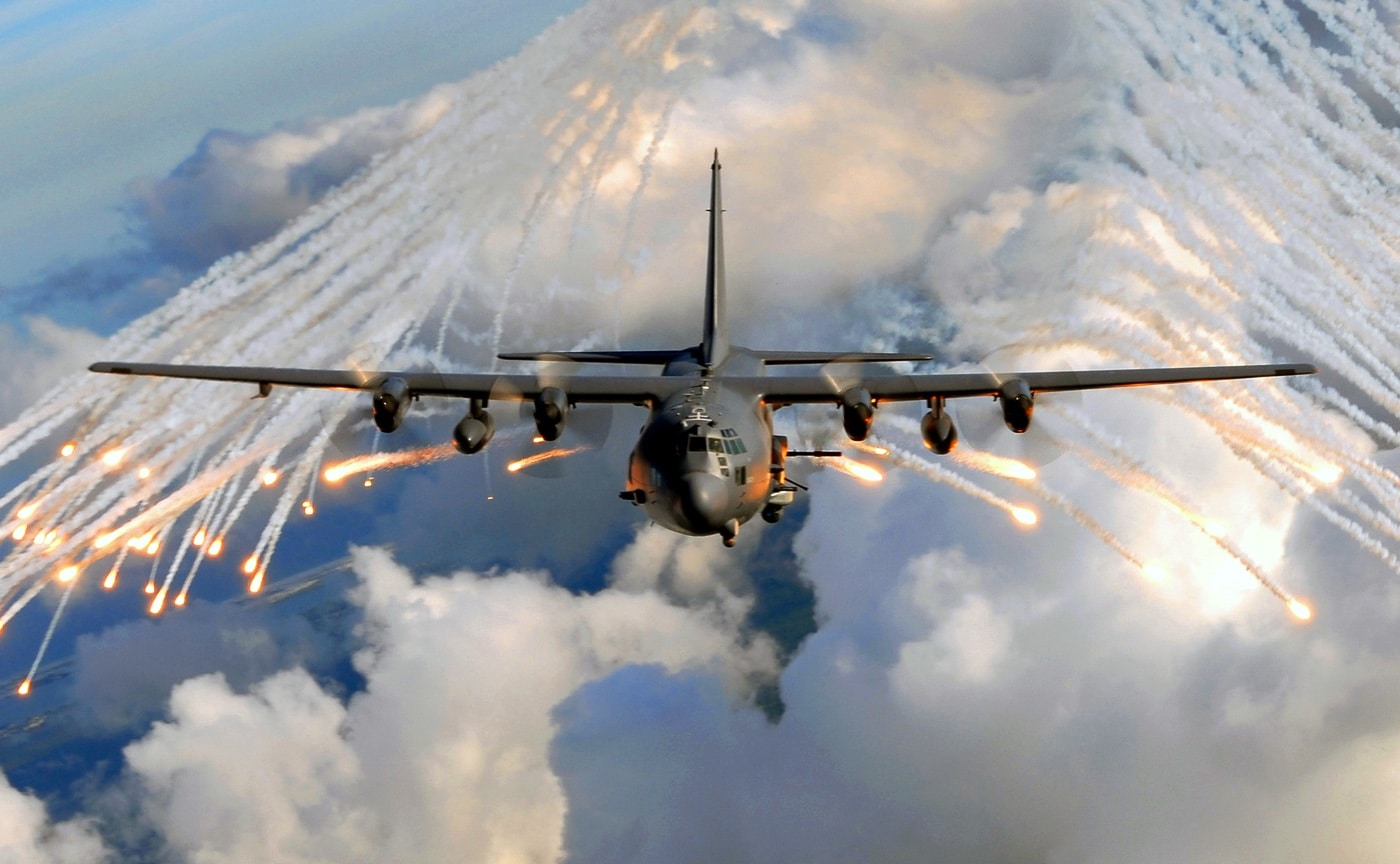
Afriend was an infantry officer during Operation Just Cause, the 1989 invasion of Panama. He told me this story as gospel. He claimed that his unit was tasked to move along a certain road to secure a certain objective. Along the way, they encountered a Panamanian unit tasked to secure the road against any American advance. There resulted a timeless quandary. An unstoppable force was arrayed against an immovable object. Both elements consisted of tooled-up young men with weapons. The foundation was laid for something truly horrible.
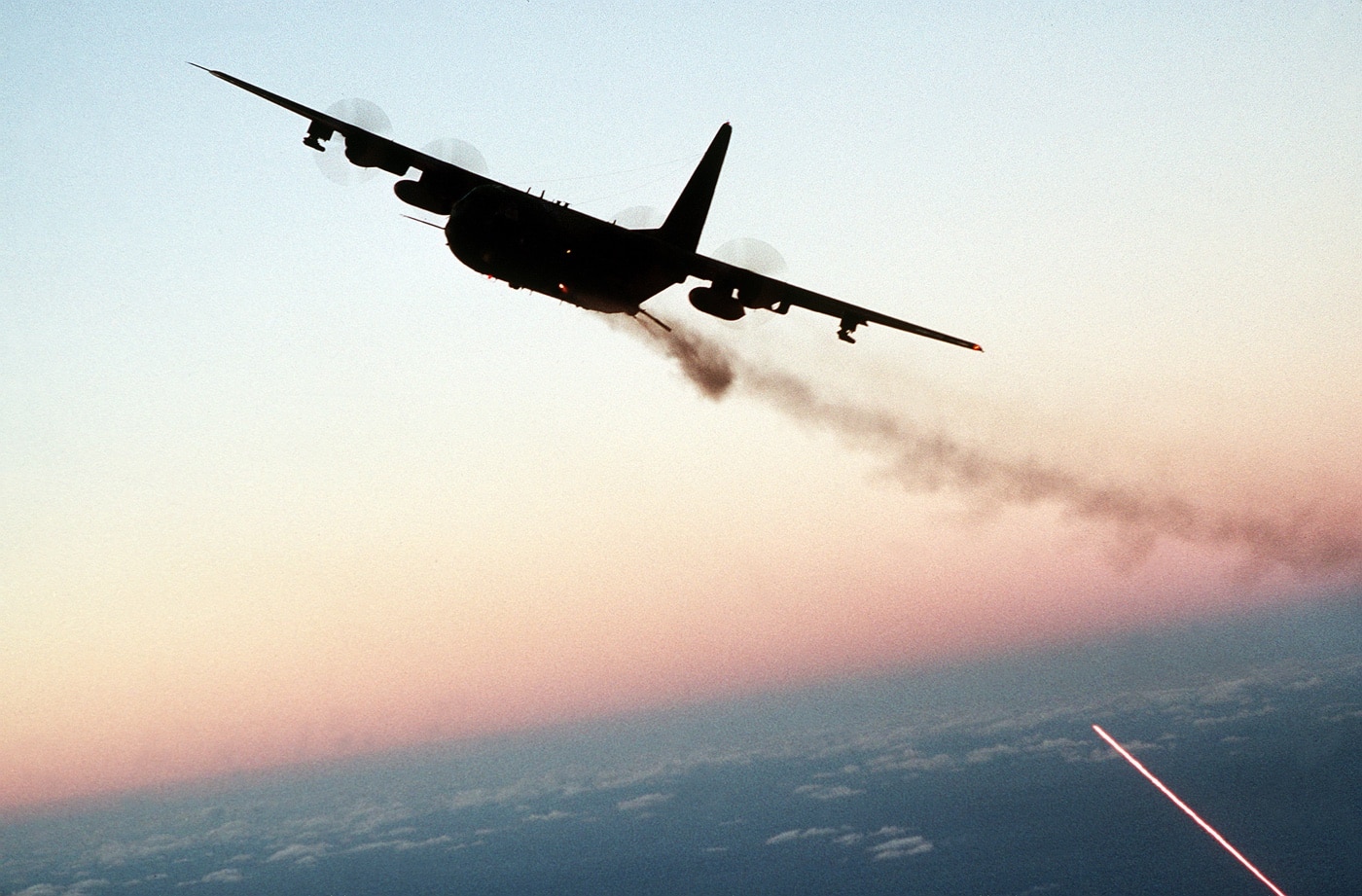
Not wishing to precipitate unnecessary bloodshed, the American commander retrieved a Spanish-speaking troop to act as an interpreter. He called a confab with his opposite number and explained his predicament. His Panamanian counterpart felt disinclined to move. By now, it was getting dark. The American CO spoke into his radio and directed the Panamanian officer’s attention toward an empty barn in a distant field.
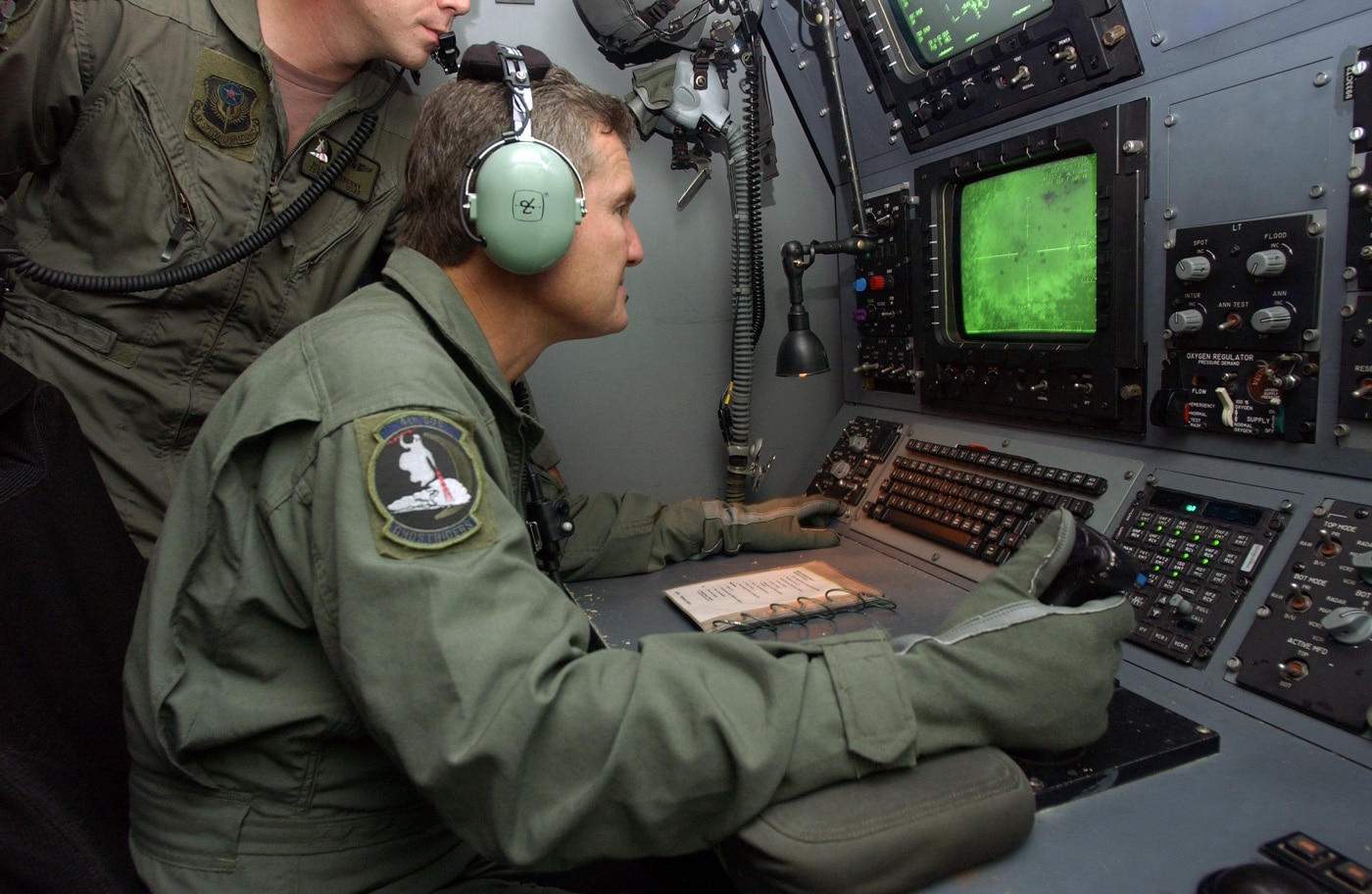
Counting down from five, the barn exploded in a massive flash just as he reached zero as though touched by the very finger of the Almighty. The Panamanian officer purportedly dismantled his roadblock. This tidy little battle had just been won by a single 105mm howitzer round fired from an unseen AC-130 gunship orbiting in the darkness above.
The Plane
The AC-130 project began in 1967 as a replacement for the AC-47 Spooky gunship. The AC-47 was called Project Gunship I. The subsequent AC-130 was something altogether new and remarkable.
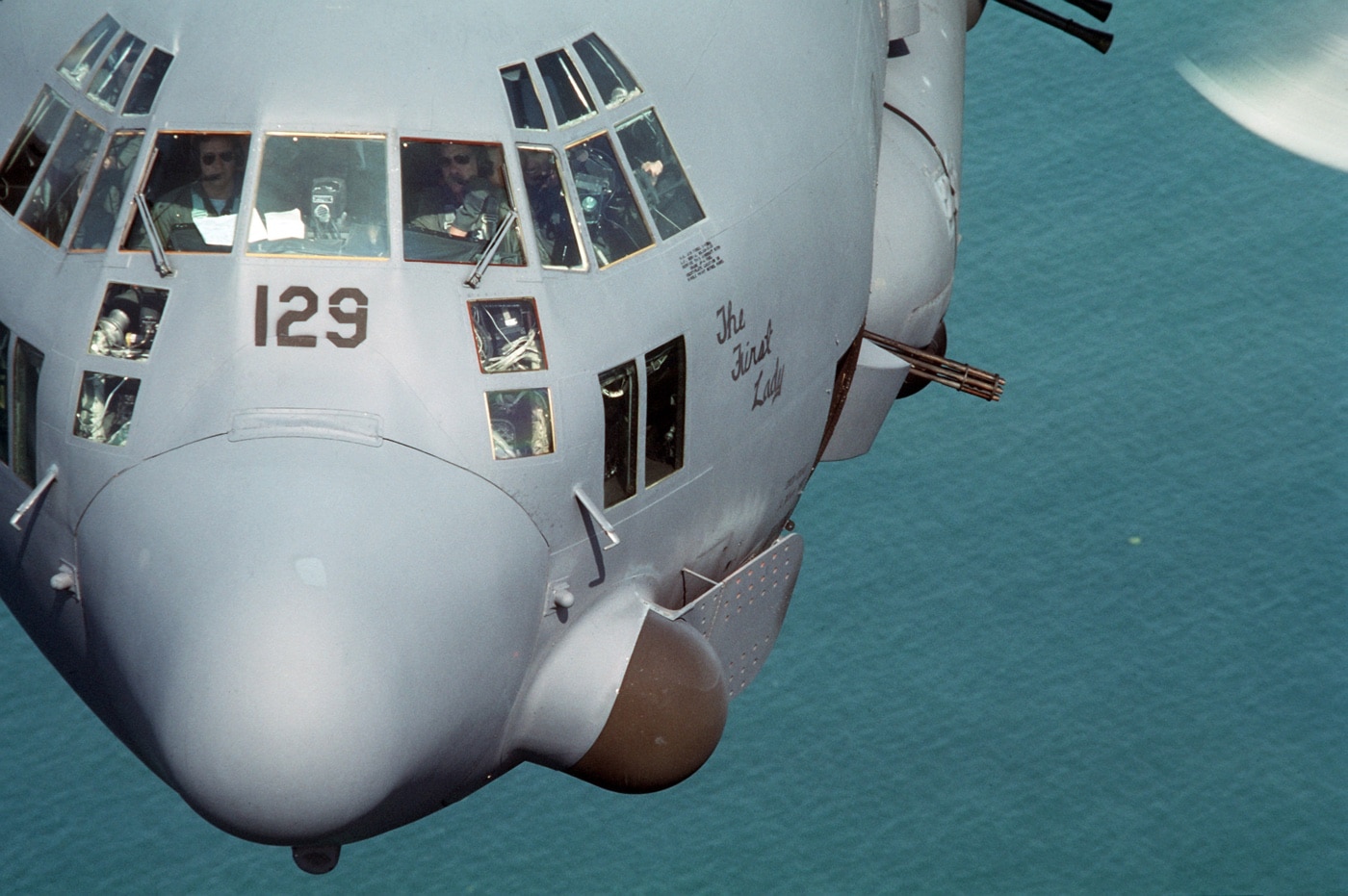
The first AC-130 was converted from a standard A-model Hercules and carried four M61 Vulcan six-barrel 20mm rotary cannon alongside another four GAU-2/A 7.62x51mm miniguns. Aerial gunnery is the very embodiment of physics. An RAF exchange officer named Tom Pinkerton scratchbuilt the first analog fire control computer used by the AC-130 while working at the USAF Avionics Laboratory at Wright-Patterson Air Force Base.
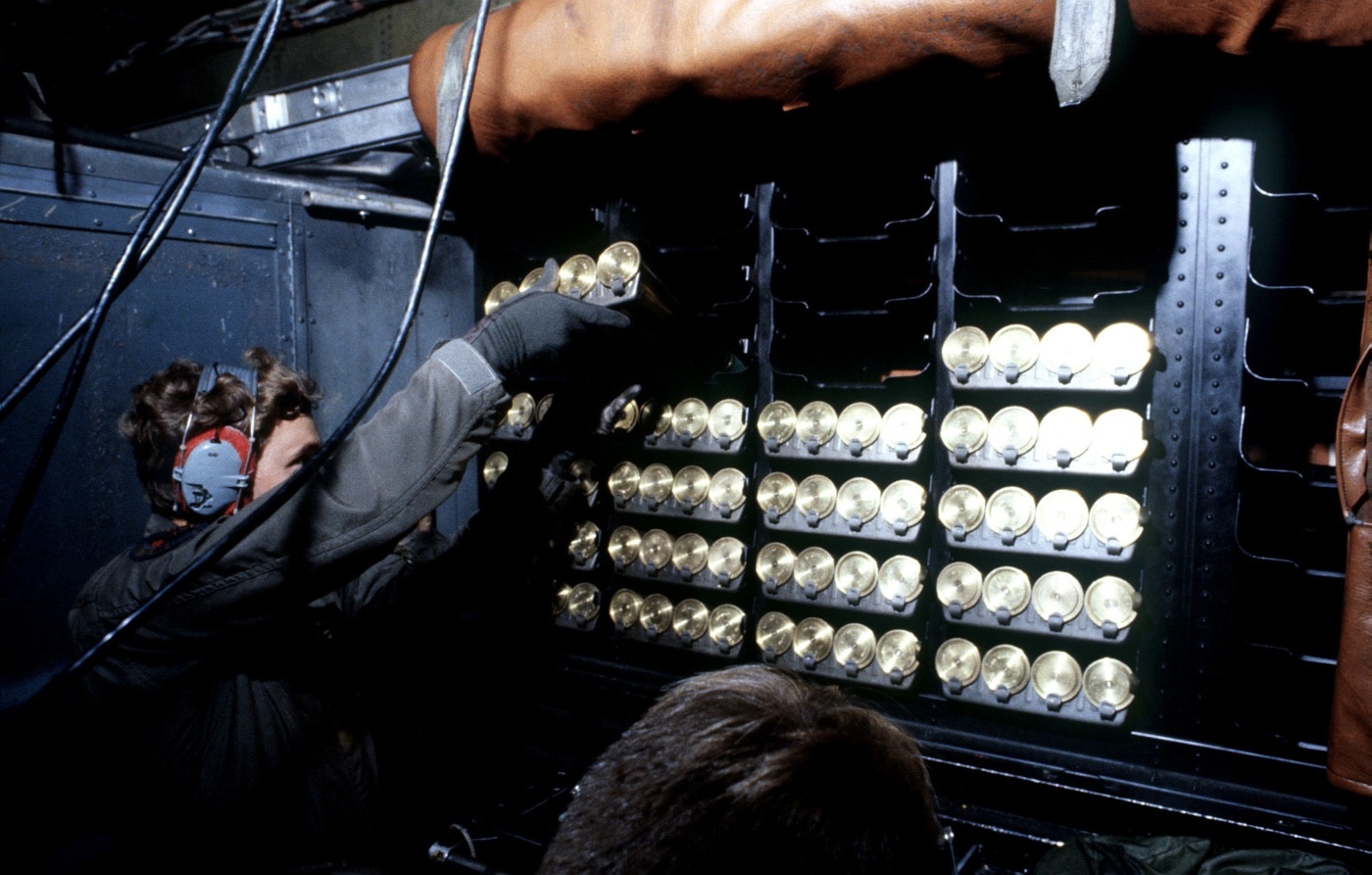
During operational testing in the Vietnam War, it was determined that the miniguns lacked the necessary range to optimize the platform, so they were deleted. This space was filled with a pair of 40mm L/60 Bofors cannons. I’ve been told that the most precise weapon on those early variants was the 40mm autocannon. In the early 1970s, these aircraft were fitted with a 105mm M102 howitzer near the aft ramp.
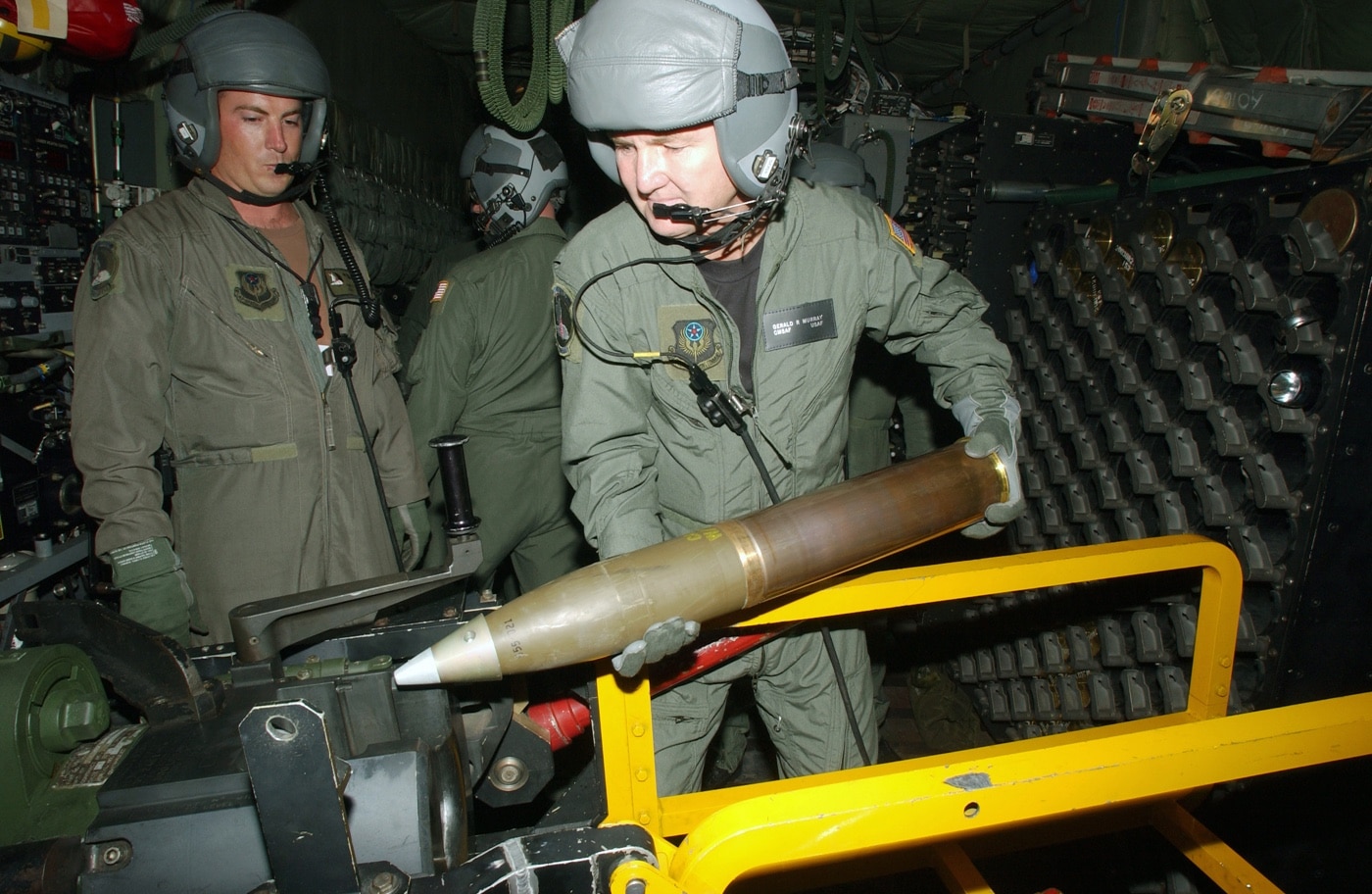
The latest versions of the AC-130 carry a single 25mm rotary cannon, a single L/60 Bofors 40mm, and the M102 105mm howitzer. AC-130s in current service can also deploy AGM-176 Griffin missiles, AGM-114 Hellfires, GBU-39 Small Diameter Bombs, or GBU-44/B Viper Strike munitions along with drones and other classified ordnance. While the weapons are always the sexiest part of the equation, what really makes the aircraft such a dominating force on the modern battlefield is its unparalleled sensor suite.
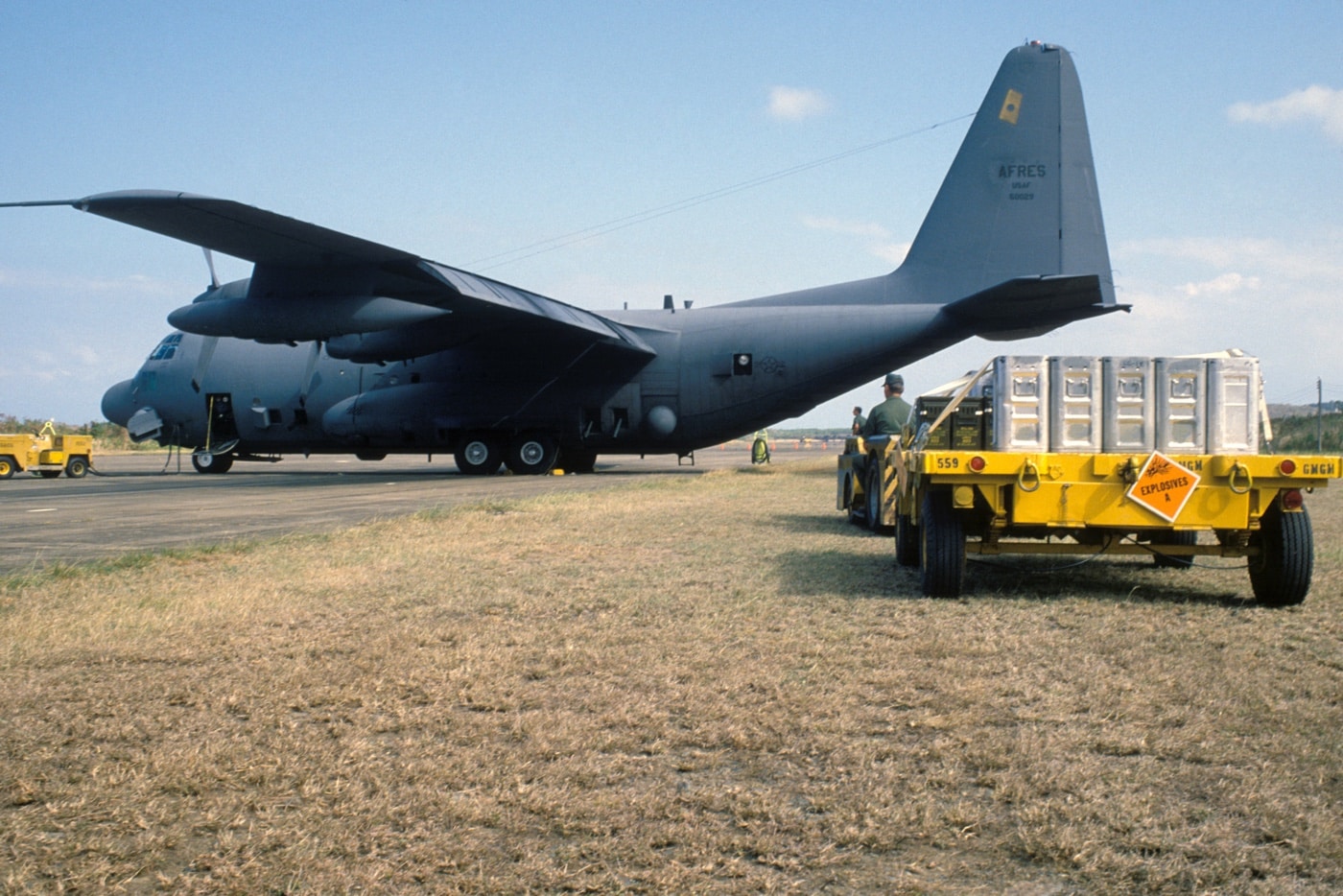
The aircraft has always carried low-light TV and infrared sensors. These advanced avionics have been steadily upgraded since the introduction of the platform. Even back during the Vietnam War, the AC-130 could detect an unshielded ignition coil in a truck from a typical engagement altitude of 7,000 feet. Nowadays, the aircraft carries the AN/APQ-180 multimode attack radar similar to that used on the F-15E Strike Eagle along with a state-of-the-art Raytheon FLIR (Forward-Looking Infrared) and a Lockheed Martin AN/AAQ-39 Gunship Multispectral Sensor System.
The AN/AAQ-39 can see most anything anywhere day or night and includes a variety of laser range finders and automatic target designators. Modern American combat uniforms and helmets typically include a small bit of reflective material on the top to make friendly troops stand out to the AC-130’s sensors at night.
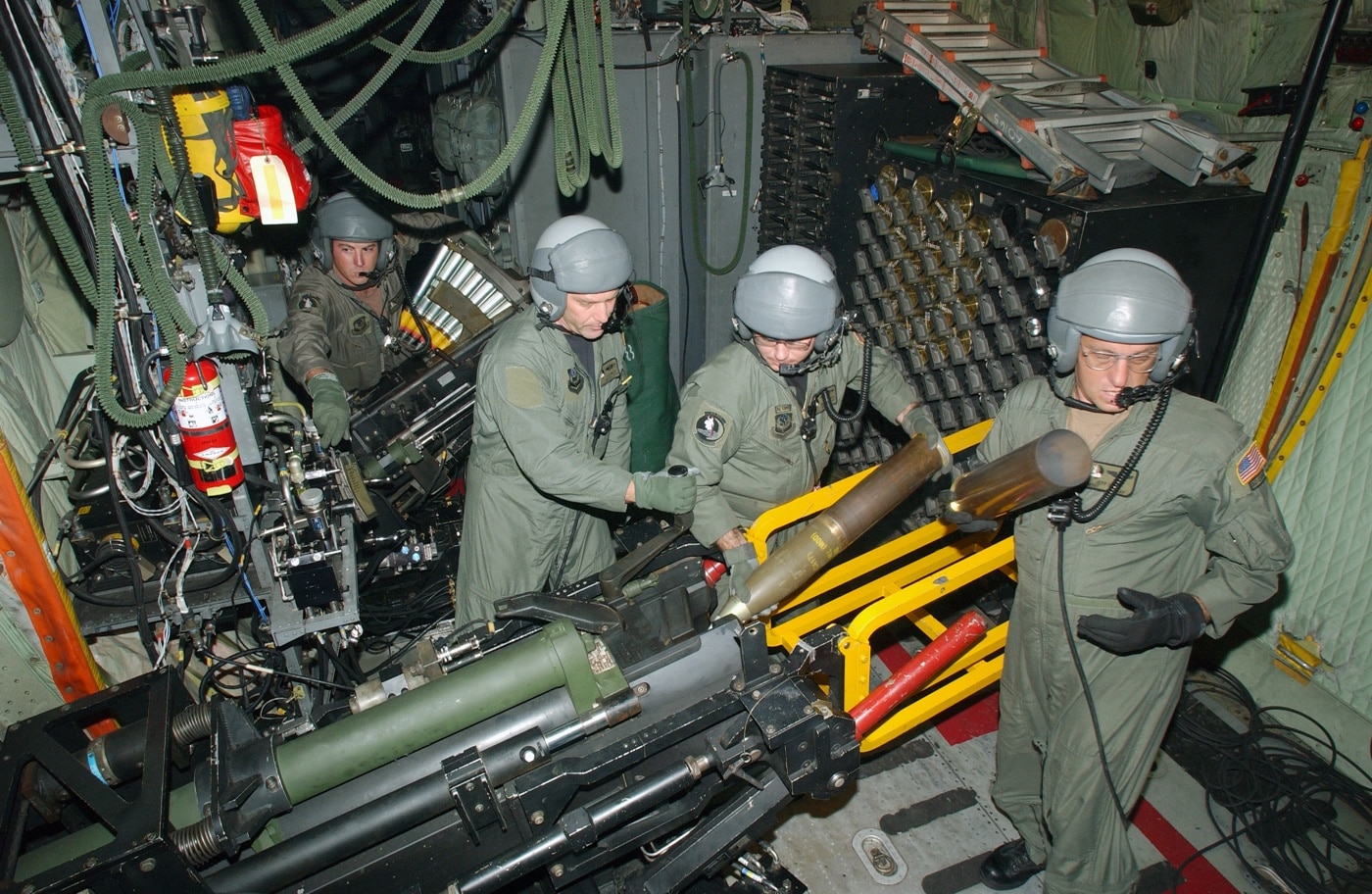
The weapons on the AC-130 are mounted on the port side of the aircraft and are fired by the pilot. By flying pylon turns, a skilled pilot can maintain a steady stream of fire on a point target for as long as the fuel and ammunition holds out. As modern variants are capable of air-to-air refueling, their missions are typically limited solely by the availability of darkness and ammo. I literally cannot imagine how horrible it would be to find oneself on the receiving end of one of these angry birds.
Operational History
These gunships have been employed in every major military engagement in which the United States has been involved from Vietnam to the present day. None have been exported. We are their sole operators.
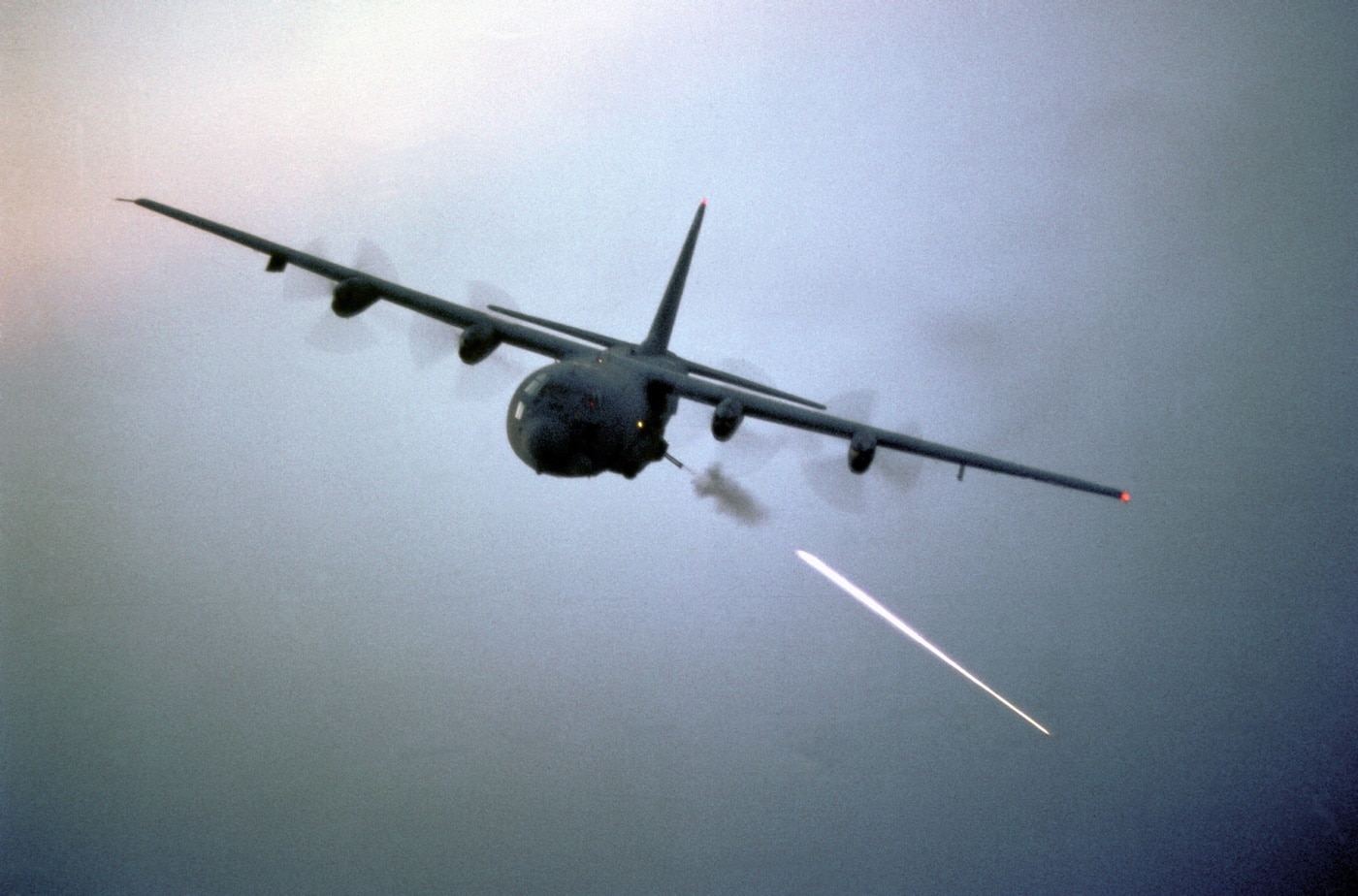
Six AC-130s were brought down during the Vietnam War by hostile action. Two were lost to surface-to-air missiles, while the remainder fell to anti-aircraft artillery. One AC-130 was shot down by a MANPADS (Man-Portable Air Defense Systems) shoulder-fired missile in 1991 and crashed off the coast of Kuwait. This aircraft, callsign Spirit 03, was lost when its crew made a conscious decision to remain in action in daylight because the Marines they were supporting desperately needed them.
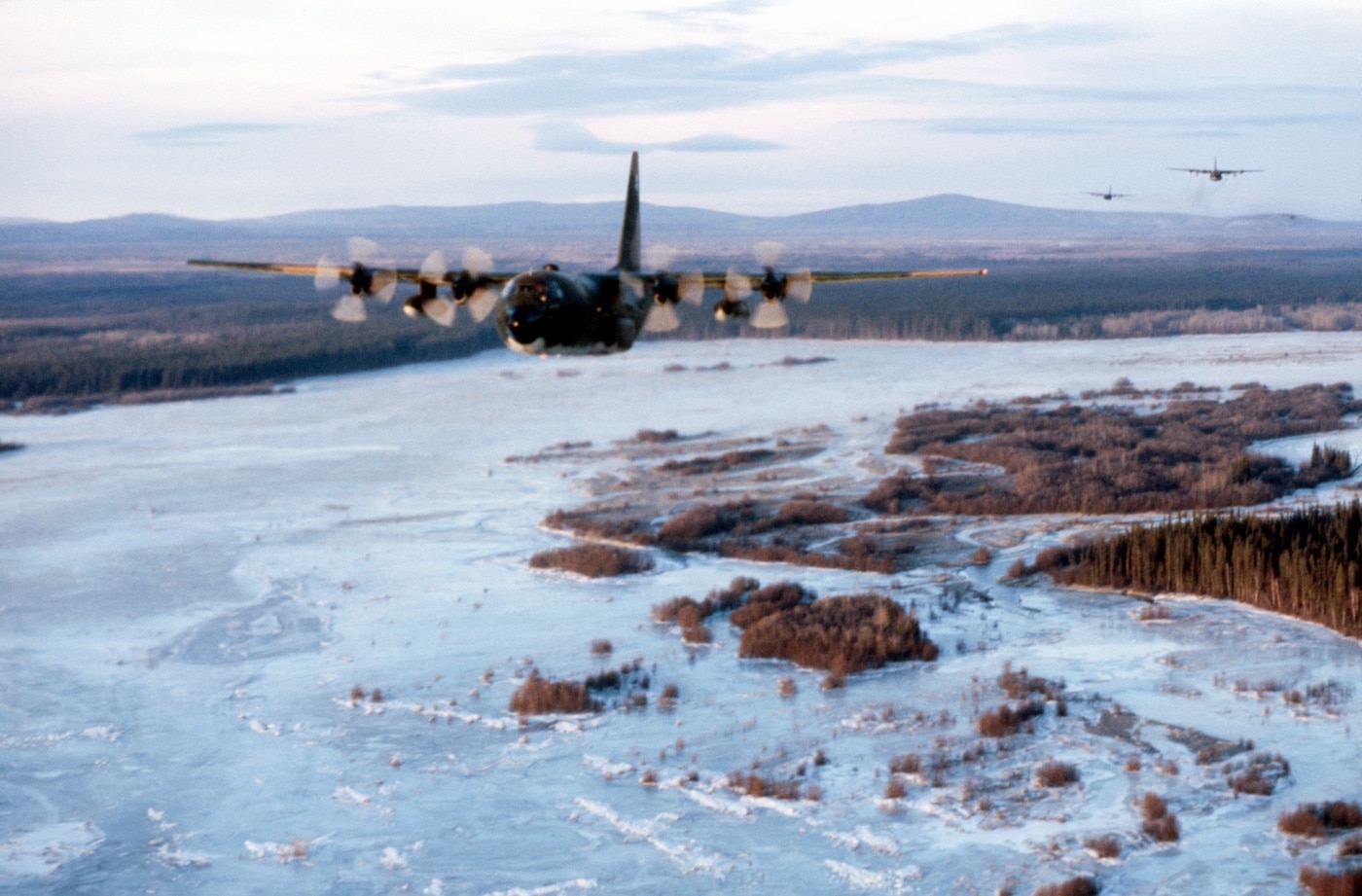
An eighth one was brought down 200 meters off the coast of Kenya while supporting combat operations in Somalia. This last aircraft suffered an in-bore detonation of a 105mm round that severely damaged the left wing. Eight of the fourteen crewmembers aboard survived the crash.
A Most Satisfying Mission
I have a buddy here in town who flew AC-130s operationally. One afternoon after church I asked him to relate his most remarkable combat experience in the plane. Without hesitation, he said it was one particular mission wherein he fired nary a shot. I bid him to proceed.
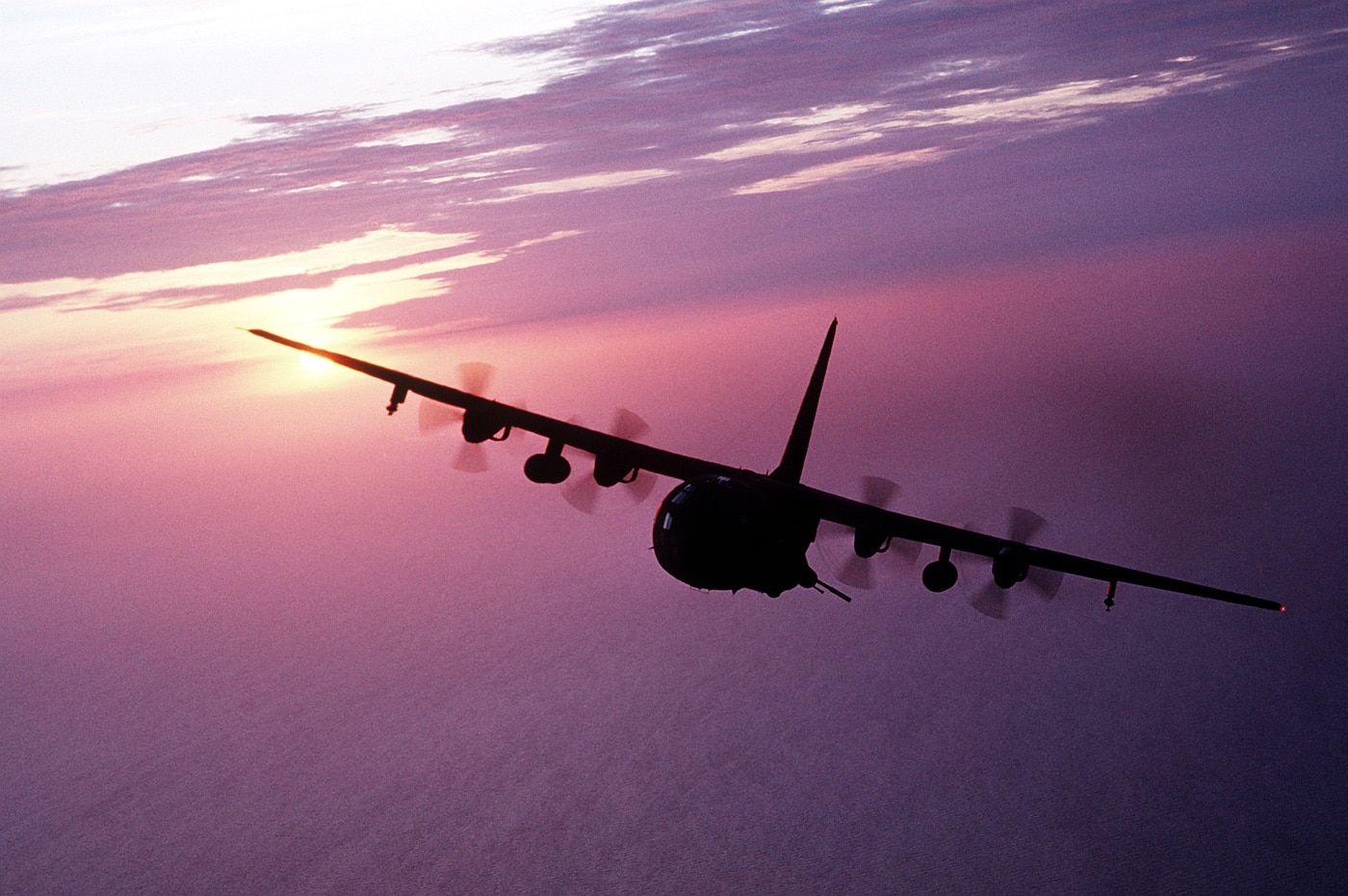
He was tasked to support a small five-man Special Forces team that had been compromised by the Taliban while on a recon mission in Afghanistan. These poor guys had been awake and on the run for several days. They were just about spent.
While the AC-130 is an undeniably fearsome weapon platform, it is also quite vulnerable. The aircraft is not terribly useful in contested airspace. Its relatively slow speed and long loiter times are benefits against targets bereft of air assets, but these attributes become liabilities in a battlespace liberally populated with MiGs and S-300 air defense systems. In Afghanistan, where the primary anti-aircraft threat was MANPADS, that just meant they flew only at night.
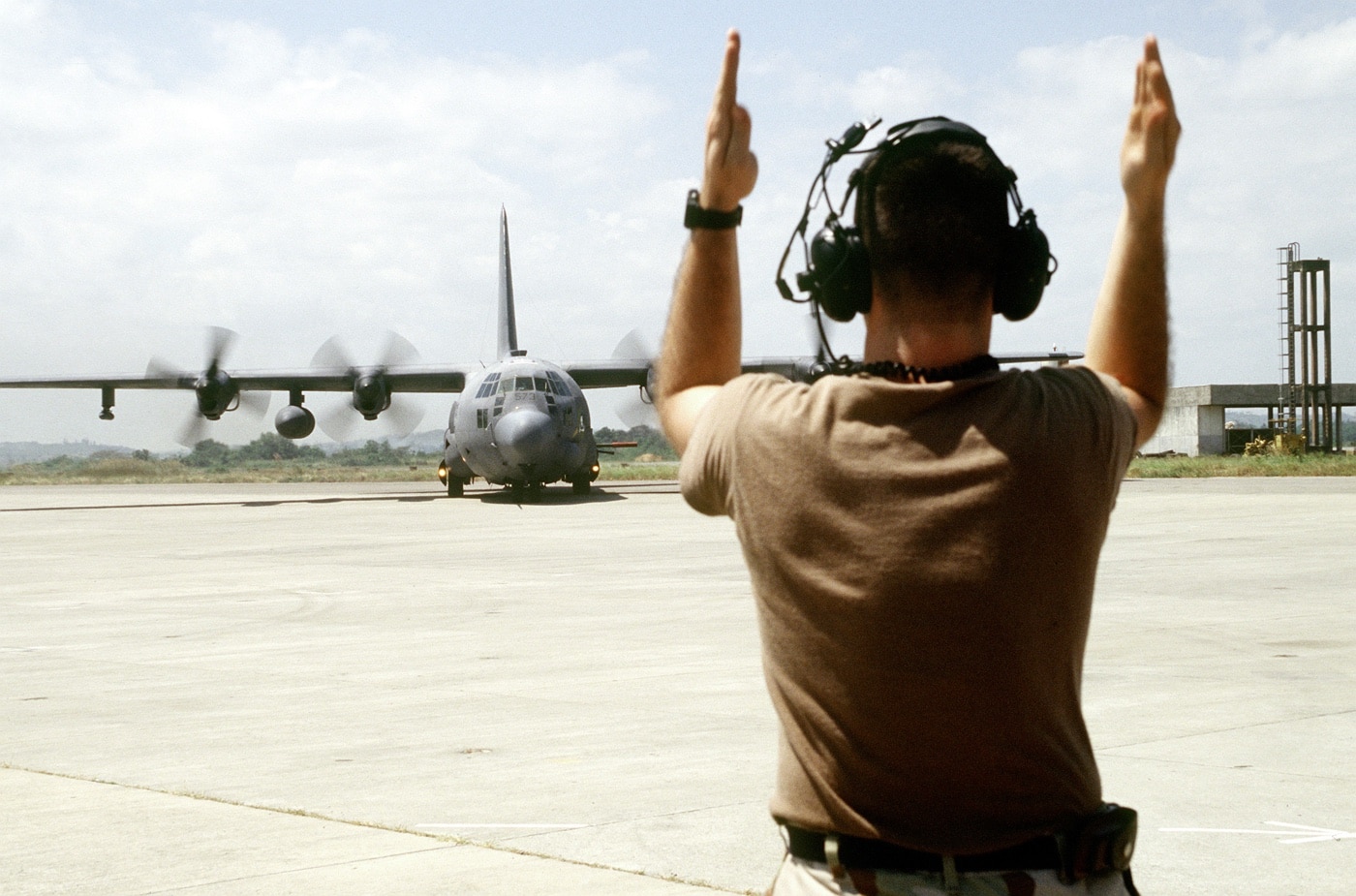
My buddy found the team easily enough and could tell from their first transmission that these guys were at the end of their rope. He took a long slow orbit around the area to ensure there were no bad guys in close proximity and then simply told the team leader to shut down and get some rest. There was no need to put out security. He would take care of that.
The Green Berets bedded down for some well-deserved shuteye, while my pal simply flew circles in the night keeping an eye out until he hit bingo fuel. At the end of the evening the SF guys were well-rested and my buddy returned to base with a full load of ordnance. Nobody got killed, and the special operators got a good night’s sleep.
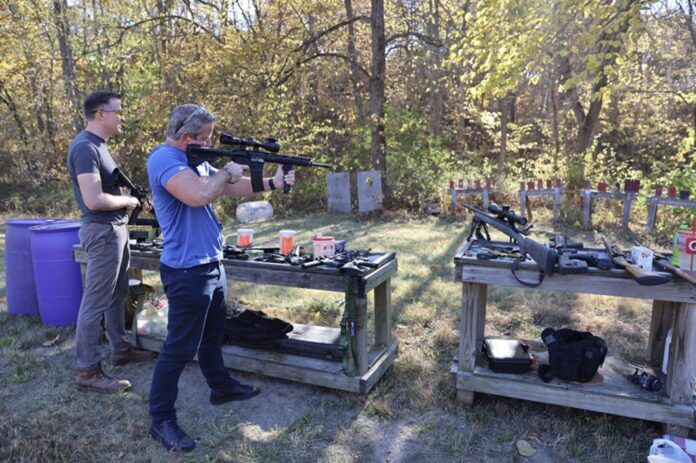 When candidates run for office in rural districts, they naturally want to prove they’re just like the voters they seek to represent. But things often don’t go as planned when they’re just posing as everyday gun owners.
When candidates run for office in rural districts, they naturally want to prove they’re just like the voters they seek to represent. But things often don’t go as planned when they’re just posing as everyday gun owners.
Such was the case in Missouri recently when Democrat Lucas Kunce, a candidate for U.S. Senate, and former congressmen turned CNN commentator Adam Kinzinger held a media event at a private range near Holt, Missouri. With media in tow, Kunce, who is trying to unseat Republican U.S. Sen. Josh Hawley, set out to prove his marksmanship skills—a sure way, it seems, for Democrats to prove they are not anti-Second Amendment advocates.
As both Kunce and Kinzinger are military veterans, one would think they could have avoided the inevitable problem that soon occurred. Who they meant to impress by shooting AR-15s at targets only 10 to 12 yards downrange is anyone’s guess. But almost anyone who has ever shot an AR—or any other rifle—knows you shouldn’t shoot steel targets at such a short distance.
Alas, that’s what the duo did. And, given the propensity of bullets to ricochet off hard surfaces, a fragment from one of Kunce’s bullets bounced off a target and hit Ryan Gamboa, a Kansas City television reporter, in the arm. Kunce and Kinzinger managed to patch up Gamboa’s wound, and the range session continued.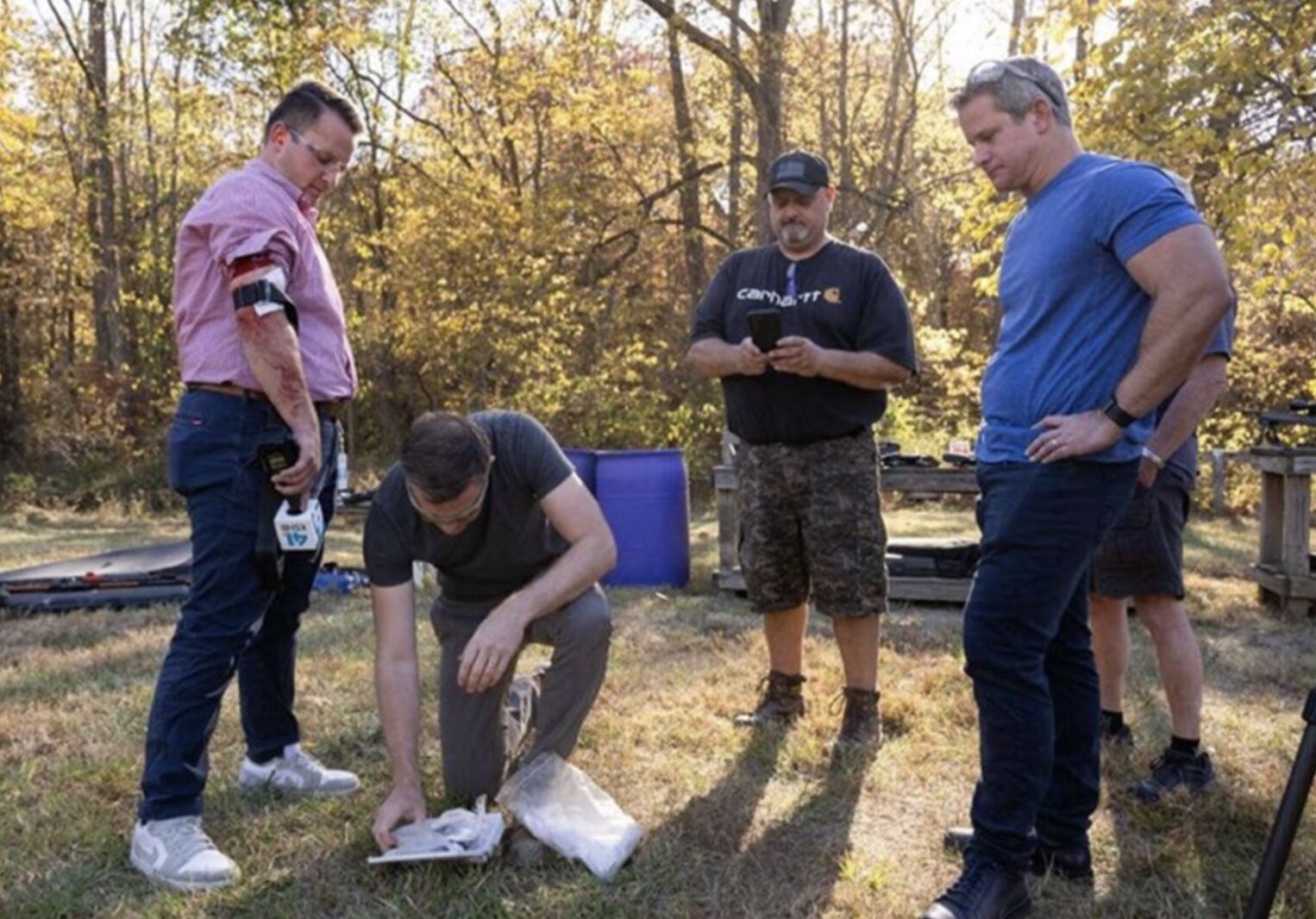
Of course, it could have been worse. Any bystanders could have been hit somewhere more serious than the arm with a ricochet when shooting steel at that distance. In fact, one photo from the media op shows Kinzinger sending rounds downrange with his safety glasses on top of his head! He could easily have lost an eye or even had his brain penetrated by a ricocheted bullet fragment.
Alas, candidate Kunce was able to brush the bullet wound aside and declare victory following the episode.
“Great day at the range today with my friend @AdamKinzinger,” he posted on X. “We got to hang out with some union workers while exercising our freedom.”
Then, rather than apologizing to the photographer for putting him in harm’s way, Kunce bragged about his own preparedness.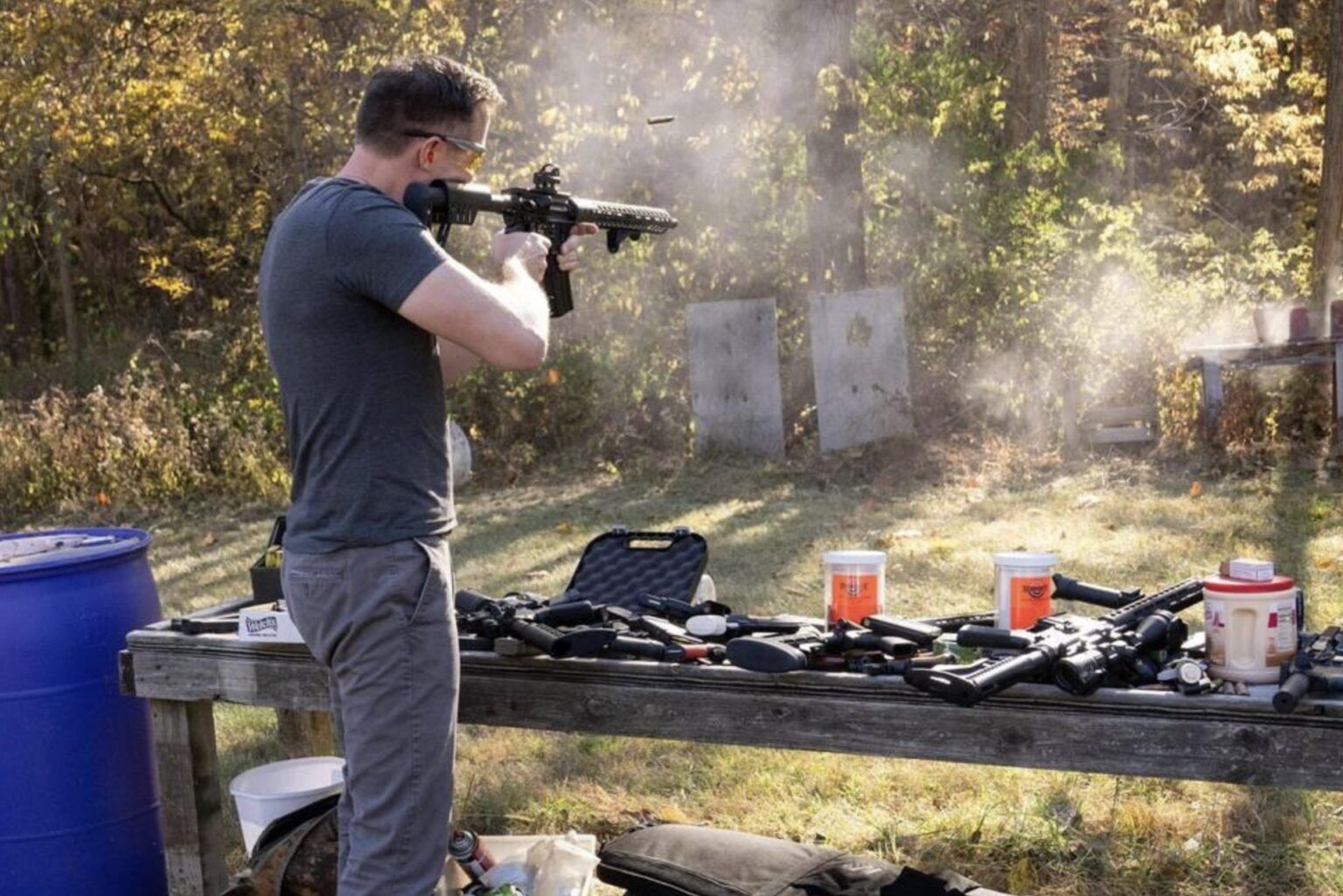
“Always have your first aid kit handy,” he posted. “Shrapnel can always fly when you hit a target like today, and you’ve got to be ready to go. We had four first aid kits, so we were able to take care of the situation, and I’m glad Ryan is okay and was able to continue reporting.”
Gamboa did reportedly go to a hospital after the event to get his arm checked and was afterwards released several news outlets reported. The group had Tannerite on hand as well as evidenced in the photos. Tannerite is an explosive target that is fun to shoot, but definitely shouldn’t be shot at at such close range as the photos indicate.
Regarding media opportunities gone wrong involving Democrat candidates this election season, this one might have topped the recent escapade by Minnesota Gov. Tim Walz, the Democratic vice presidential candidate, when he invited television reporters along on a pheasant hunt. Walz blew the video op by bumbling and fumbling while trying to load his Berretta semi-auto shotgun. The bungled loading video had some on social media questioning whether he’d ever been pheasant hunting.
True to form, Walz didn’t take the criticism well. When asked about it later in an appearance on “The View,” Walz lashed out, claiming he has superior marksmanship skills compared to his “right-winger” critics.
“Well, I can shoot better than all of them,” he said. “I’ve got the trophies to prove it.”
Perhaps, when both Kunce and Walz lose on election day, they can spend some quality time together in the field or on the range!
This is what you have to wear in order to protest in fascist America. pic.twitter.com/yLY8Et6VY7
— Dr. Jebra Faushay (@JebraFaushay) May 5, 2024
BELLEVUE, Wash. — Oct. 22, 2024 — A federal judge in New York has issued a permanent injunction against the Cortland Housing Authority (CHA) prohibiting any sort of firearms ban against CHA tenants, in a victory for the Second Amendment Foundation (SAF) and its fellow plaintiffs.
SAF was joined in this action by three private citizens, Robert Hunter, Elmer Irwin and Doug Merrin. They are represented by attorneys Edward Andrew Paltzik, Serge Krimnus and Meredith Lloyd at Bochner PLLC in New York City. U.S. District Judge Glenn T. Suddaby with the U.S. District Court for the Northern District of New York signed the order.
“Pursuant to Plaintiffs’ claims as set forth in the First Amended Complaint, Defendants, and their respective employees, agents, representatives, service providers and/or contractors, are enjoined from prohibiting Plaintiffs and all other CHA tenants from owning, possessing, transporting, or using firearms for lawful purposes, provided they are otherwise qualified and in compliance with all federal, state, and local laws applicable to the ownership, possession, transportation and use of firearms,” Judge Suddaby wrote.
He also ordered the defendants — CHA and Executive Director Ella M. Diiorio — to pay plaintiffs’ counsel $150,000 for attorney’s fees and costs.
“This is not the first time SAF has successfully challenged a gun ban in a public housing authority facility,” recalled SAF founder and Executive Vice President Alan M. Gottlieb. “Whenever we are alerted to this sort of thing, we are prepared to challenge it. Bringing these cases simply fulfills our effort to win firearms freedom one lawsuit at a time.”
“At some point,” SAF Executive Director Adam Kraut observed, “it should become abundantly clear to various public housing authorities that gun bans are not allowed. Residents do not leave their constitutional rights at the entrance, as each of our victories over the years have affirmed.”
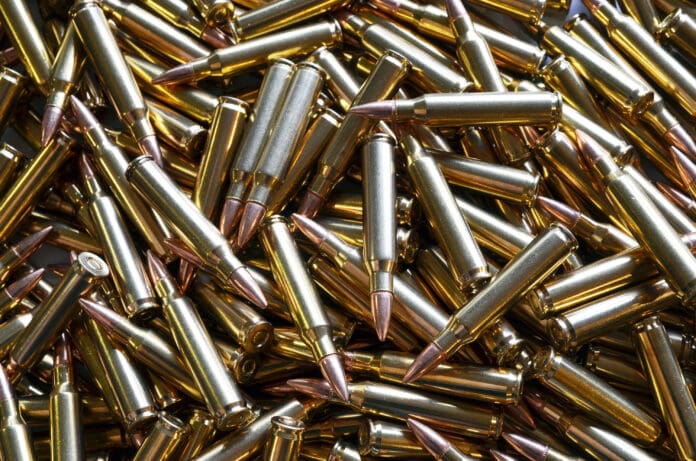 A gunpowder shortage is here, but it hasn’t affected the supply of popular ammo like 9mm and 5.56 NATO, yet. There is still plenty of popular ammo on dealers’ shelves both in brick-and-mortar retail stores and online. But the gunpowder shortage is here and coming at us like a slow-moving hurricane. We know it is coming, just not sure when it will hit.
A gunpowder shortage is here, but it hasn’t affected the supply of popular ammo like 9mm and 5.56 NATO, yet. There is still plenty of popular ammo on dealers’ shelves both in brick-and-mortar retail stores and online. But the gunpowder shortage is here and coming at us like a slow-moving hurricane. We know it is coming, just not sure when it will hit.
The problem when covering news like a gunpowder shortage is that it is almost a self-fulfilling prophecy causing a run on ammo supplies. I tend to be skeptical and not cynical, but I am suspicious. I have no crystal ball, but I do know people in the ammunition making and selling industries. Is it a grand marketing scheme to sell ammo? Or is it real? From those I’ve spoken to, the shortage is real, but it is not all gloom and doom. Some call it a typical manufacturing cycle. Others call it economics 101 and a simple case of supply and demand. There are other added factors, too, like a war in Europe and conflict in the Middle East, that play into the shortage.
It’s called the FUD factor: Fear, Uncertainty and Doubt. We have had a lot of fear, uncertainty and doubt in past years. Good reasons to buy ammo. Lots of ammo. The mere hint of a lack of supply causes a run on products. It’s a vicious circle.
The first ammo shortage coincided with Obama’s second term. When Democrats in office turn up the gun control rhetoric, that causes consumers—you and me—to buy guns and ammo for fear of not being able to get either. Legislation can be a significant factor in most ammo shortages.
The most recent ammo shortage, however, was a combination of a pandemic and national instability, causing a near perfect storm. Covid hit us with a sucker punch in 2020, and we didn’t know what was going to happen. Not that buying ammo would treat Covid, but there was that uncertainty over the supply of all goods. Remember people hoarding toilet paper? Ammo was on that list of supplies, maybe below masks and hand sanitizer, but it was on the list.
The national instability came with the fallout from George Floyd’s death while being taken into police custody in 2020. Call them protests or riots, people were in fear. Respect for law and order had evaporated throughout the country. Cancel culture became the mantra of mobs on the street as statues were pulled down in attempts to rewrite history. Law enforcement was at times helpless to stop the rampage or as was most often the case, hand-tied by left leaning public officials who were either afraid to raise the ire of the mobs or in some instances, saw a political opportunity in allowing rioters to run amuck under the guise of “peaceful protests.” Businesses were destroyed, and we vividly remember home owners standing their ground in their front yard brandishing AR-15s and handguns. We all wondered if the mob was going to come to our neighborhood next. Ammo flew of the shelves as gun purchases also skyrocketed. Safety and self-rescue were our only options during that period. The social contract had been broken.
The New Ammo Shortage
The cause of this new ammo shortage is different. Global instability with wars in the Middle East and Ukraine is draining the market of gunpowder. Artillery shells use copious amounts of gunpowder—not the exact kind in your 308 Winchester cartridge—but it all comes from nitrocellulose, the key material in producing gunpowder and other munitions propellants. Nitrocellulose is not just used in producing gunpowder, but is also used to manufacture paints, ink and other finishes. Nitrocellulose is an agricultural product with Thailand, China and India the largest producers. The U.S. is a major importer. According to the Washington Times, members of Congress approached the Biden administration on getting ahead of the shortage back in April of this year. The intent of the Ammunition Supply Chain Act was to require the Biden administration to submit a report to Congress about the current state of the domestic supply of necessary components for smokeless gunpowder. No such report, however, has been provided by the Biden administration.
Players In The Ammo Space
The only domestic gunpowder manufacturer is St. Marks in Florida, a division of General Dynamics. St. Marks produces a broad spectrum of ball powder propellants for rimfire and magnum rifle cartridges to 20mm munitions and pistol cartridges.
“With the Ukraine-Russia war and the fighting around Israel, gunpowder production has shifted to military needs,” says Peter Foss, CEO of Shell Tech ammunition. “We secured powder for our production knowing the shortage was on the horizon.” Shell Tech is a nimble ammunition manufacturer that produces high-quality ammo loaded in a two-piece proprietary shell case designed to outperform brass and nickel-plated brass for the same price as brass. Small manufactures can be fast to react while the big players—Remington, Hornady, Federal, Winchester, Fiocchi, and others—are large corporations that cannot easily turn on a dime. There is a board of directors they report to.
I contacted numerous large ammo manufacturers for comment, but all I got was crickets. I get it. It does them no good to comment. At best. large ammunition manufactures can run a third shift, but they can’t stockpile powder since security and storage space costs is not in the budget. The big ammo players have also seen this cycle of supply and demand before and by the time they gear up the supply will be back to normal. This doesn’t mean the big players have not prepared. They have produced plenty of popular ammo like 9mm, 5.56 NATO, .308 Winchester, .30-30 and the like. It’s the less popular calibers like .44-40 Winchester, 6.5 Swede and others that become hard to find.
You may have already seen the impact of a coming gunpowder shortage.
“Some magnum rifle calibers are being loaded with different powders,” says Steve Fox COO of Shell Tech. “You may notice that your magnum rifle caliber doesn’t have the velocity it should. That’s because the powder for those calibers is not available and an alternative powder is being used.” Foss and Fox also mention that brass is available but large primers—another product imported from oversea into the U.S.—have become harder to find.
An Ammo Retailer’s Perspective
Dan Wolgin, CEO of Ammunition Depot, has weathered the ammo shortage before. He did a quick back of the envelope calculation using the amount of munitions going to help Ukraine and Israel and quickly determined about 27 million pounds—give or take—was being diverted. That amount of powder equates to about 40 billion 9mm rounds.
“During COVID, 9mm was more impacted than any other caliber,” Wolgin says. “With the military need, 5.56 NATO sees an impact.” Regardless of the factors, .22 LR goes first, typically because it cost less and is perhaps viewed more in this situation as a survival round. Wolgin believes in being nimble so he has stockpiled ammo and other supplies, so he can provide both availability and good prices. Understand it costs money to hold and store inventory and some retailers just can’t manage the numbers.
“It really comes down to supply and demand,” says Wolgin, “and having good relationships with suppliers and customers.” The demand for gunpowder has risen and there is only so much supply.
At the present there is plenty of ammo available at good prices. A quick online search found 9mm rounds going from $.21 to $.24 per round; 5.56 NATO is $.50 to $.62 per round depending on the quantity being purchased.
2024 Gunpowder Shortage: What To Do
Today, less than a month prior to the 2024 election there are rumors that another ammunition shortage is pending due to the shortage of gunpowder. Get ahead of the curve and buy when prices are low so your guns aren’t running on fumes. Or you can wait and cry about the higher prices. Either way, the storm is coming. This is your chance to be prepared.
Albany, NY (WRGB) — A recently passed New York state law that bars licensed firearms owners to carry concealed on all private property is unconstitutional, according to a federal judge.
The ruling down Thursday in the U.S. District Court for the Western District of New York follows a decision in December by the 2nd U.S. Circuit Court of Appeals.
The law makes it a felony for a concealed-carry license holder to carry their firearm on all private property — unless the property owner expressly allows it. District Court Judge John Sinatra Jr. writes that the state can’t enforce this rule on private property that is open to the public.
Regulation in this area is permissible only if the government demonstrates that the new enactment is consistent with the Nation’s historical tradition of sufficiently analogous regulations. New York fails that test here. Indeed, property owners have the right to exclude. But the state may not unilaterally exercise that right and, thereby, interfere with the long-established Second Amendment rights of law-abiding citizens who seek to carry for self-defense on private property open to the public.
New York state cannot enforce this part of the law, which also includes a ban on concealed-carry in “sensitive places,” such as government property, religious institutions, healthcare facilities, parks, libraries, places serving alcohol, and others. The Court of Appeals in December upheld the sensitive locations clause but deferred other provisions back to lower courts.
“My office will continue to defend New York’s gun laws and use every tool to protect New Yorkers from senseless gun violence,” Attorney General Letitia James said in December.
Rep. Elise Stefanik applauded Thursday’s ruling.
Despite Kathy Hochul and radical New York Democrats repeated attempts to target law-abiding New York gun owners, today’s ruling from the Western District of New York delivers a win for New Yorkers’ Second Amendment rights, striking down Kathy Hochul’s unconstitutional overreach by simply applying recent common sense rulings of the United States Supreme Court. When it comes to the Second Amendment, Kathy Hochul and New York Democrats refuse to follow the Constitution. I applaud today’s ruling and will always fight for the Second Amendment rights of law-abiding New Yorkers.
The U.S. Supreme Court struck down a century-old rule in a 2022 ruling, making it easier for New York gun owners to apply for and obtain a concealed carry license. Since 1913, New York state law required anyone seeking a concealed-carry license to show “proper cause,” or justification, to carry.
Gov. Kathy Hochul called state lawmakers back to Albany days after the ruling and within a month of the legislative session ending, to strengthen existing gun laws in response to the Supreme Court ruling.

